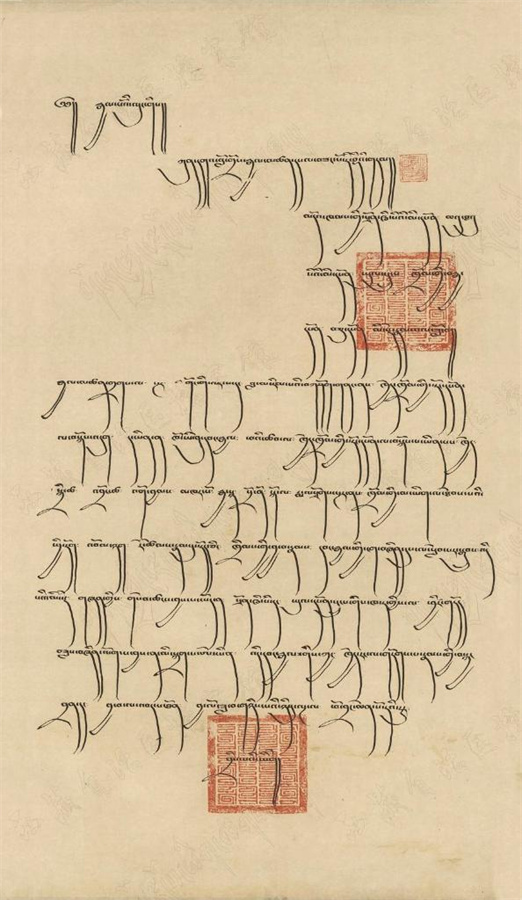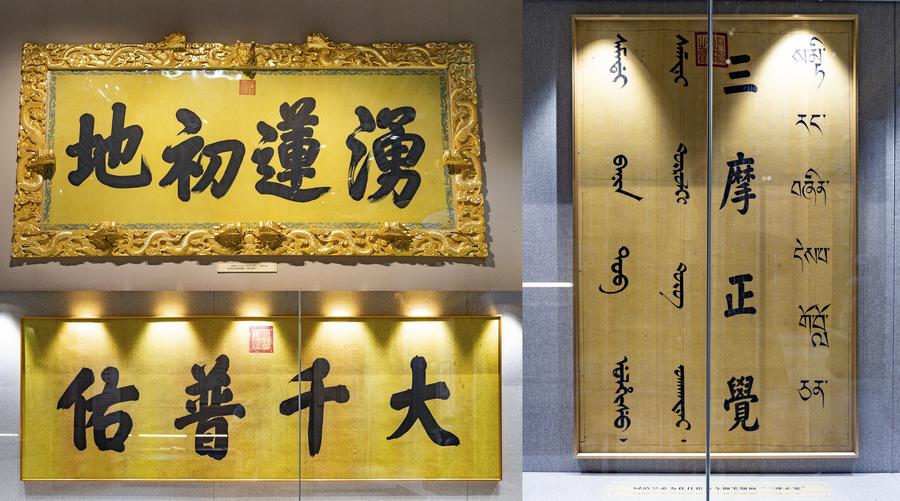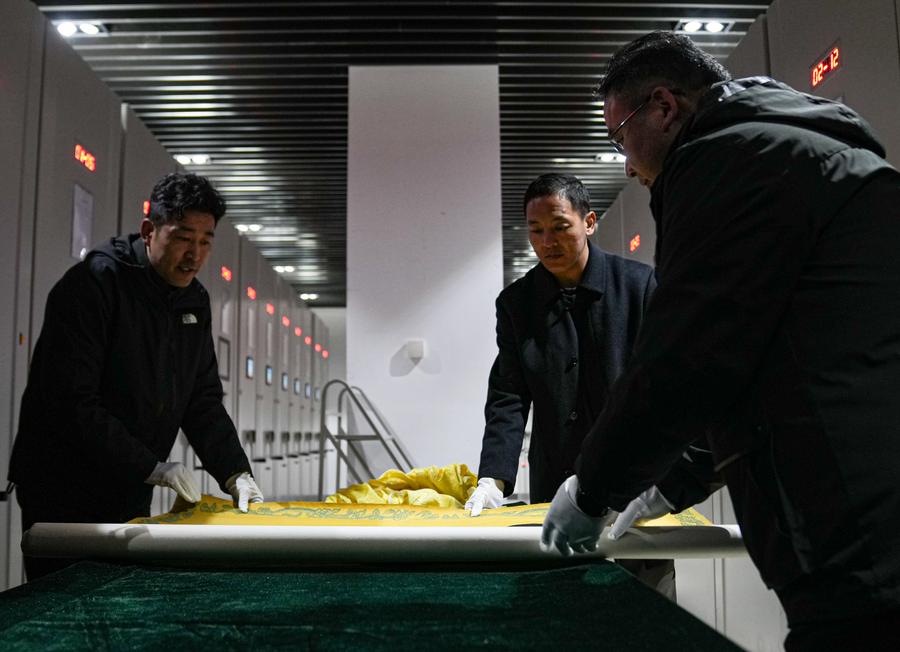Historical archives bear witness to China's exercise of sovereignty over Xizang
* Xizang has been an integral part of Chinese territory since ancient times. In Xizang, archives, cultural relics and stories from local residents substantiate this obvious fact.
* The exhibits displayed in the Archives of Xizang Autonomous Region in Lhasa illustrate the central government's undeniable governance over Xizang in terms of politics, religion and economy.
* Since the establishment of diplomatic relations between China and the United States, successive U.S. administrations have pursued the one-China policy, recognized Xizang as a part of China, and promised not to support separatist activities.
LHASA -- The recently-signed U.S. bill on Xizang contradicts not only historical facts and international consensus, but also the long-held official position of the United States itself.
Xizang has been an integral part of Chinese territory since ancient times. The idea of so-called "Tibet independence" was initiated by the imperialist powers led by Britain in the middle of the 19th century, which the United States did not support at the time.
China is a unified multi-ethnic country with a long history. Xizang has developed through the combined efforts of different ethnic groups in China. Abundant archaeological and academic research findings show that in ancient times, the ancestral inhabitants of the plateau region had close ties with the Han and other ethnic groups in terms of ancestry, language and culture.
In Xizang, archives, cultural relics and stories from local residents substantiate this obvious fact. A visit to the Archives of Xizang Autonomous Region in Lhasa helps clear any doubts concerning the issue. Consider three exhibits that vividly illustrate the central government's undeniable governance over Xizang in terms of politics, religion and economy.

This undated file photo shows a decree issued by Imperial Tutor Kungav Blogros Gyaltshan to Wanggyal in 1321 during the Yuan Dynasty (1271-1368), informing the latter to assume the post left behind by his father. The decree was issued in accordance to an imperial edict. [Archives of Xizang Autonomous Region/Handout via Xinhua]
Hung prominently on the wall of the exhibition hall are two framed certificates from UNESCO regarding the inscription of the "Official Records of Tibet from the Yuan Dynasty China, 1304-1367" on the Memory of the World Regional Register for Asia/Pacific in 2012, and the Memory of the World International Register in 2013.
The records, a collection of 22 invaluable original documents, include four imperial edicts issued by the Yuan Emperors, religious edicts issued by the Imperial Preceptors and orders from local political rulers written in Tibetan language and the rare Phags-pa script.
The documents, which the UNESCO website describes as "authentic evidence in understanding the political, religious, economic and cultural aspects of ancient Tibet," reflect the effective jurisdiction of the central government over the region in the Yuan Dynasty and the unique political life on the Qinghai-Xizang Plateau, said Rinchen Tenzin, deputy director of the archives.

This undated file photo shows the edict issued to the monks of the Riboche Monastery by Emperor Yesun Themur of the Yuan Dynasty (1271-1368). [Archives of Xizang Autonomous Region/Handout via Xinhua]
A few minutes of walk from the certificates, a board detailing the "Imperially Approved Ordinance for Better Governance of Tibet (the 29-Article Ordinance)," promulgated by the Qing government in 1793 after dispelling Gurkha invaders, highlights the decisive role of the central government in the selection of the Dalai Lama.
The reincarnation of the Dalai Lama and other grand Living Buddhas had to follow the procedure of "drawing lots from the golden urn," and the selected candidate would be subject to approval by the central government of China, stated the document in the very first article.
Observing the ordinance, three of the five Dalai Lamas in the Qing Dynasty were selected and approved in accordance with this procedure, and the other two were exempted from the procedure with special approval from the central government.

This combo photo taken on June 13, 2024 shows three inscribed boards, all written and bestowed by emperors of the Qing Dynasty (1644-1911), to the Potala Palace (upper L) and two monasteries in southwest China's Xizang Autonomous Region. [Xinhua/Tenzin Nyida]
Toward the end of the tour, a big plastic installation resembling pages of "An Inventory of the Year of the Iron-Tiger," which is an inventory of local land, corvee (unpaid labor services) and taxes worked out by the Amban according to the Qing emperor's edict in 1830, can be seen.
Amban, or the grand minister resident in Xizang, was functional in ensuring the implementation of various policies and measures issued by the Qing government for governing the region. In nearly two centuries, more than a hundred Ambans were sent successively to Xizang to serve the region.
As the result of Xizang's largest land census in history, the inventory is an important document for the study of the possession of the production means under feudal serfdom. In the 129 years before the 1959 democratic reform, the government, aristocrats and monasteries used it as the basis for issues relating to land, serfs and mandatory labor.
"Contrary to what some Western countries claim, the inventory showed that the central government had complete sovereignty over the region a long time ago," Rinchen Tenzin added.

Staff members work at the Archives of Xizang Autonomous Region in Lhasa, southwest China's Xizang Autonomous Region, April 11, 2024. [Xinhua/Jigme Dorje]
Since the establishment of diplomatic relations between China and the United States, successive U.S. administrations have pursued the one-China policy, recognized Xizang as a part of China, and promised not to support separatist activities, said Zhang Shigao, director of the Institute of Contemporary Studies at the China Tibetology Research Center.
"However, in practice, the United States often treats these commitments with negligence and even blatantly violates them," Zhang added.
Video reporters: Sonam Dekyi, Wu Sisi, Huang Zhiqi, Phurbu Tsering; Video editors: Jia Xiaotong, Wei Yin, Zheng Xin, Wang Han, Zhang Yichi
























